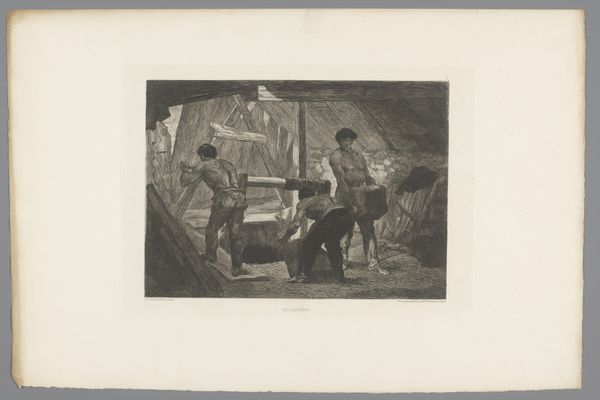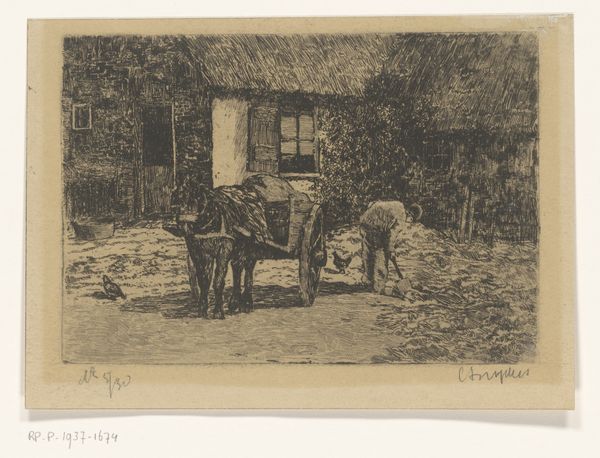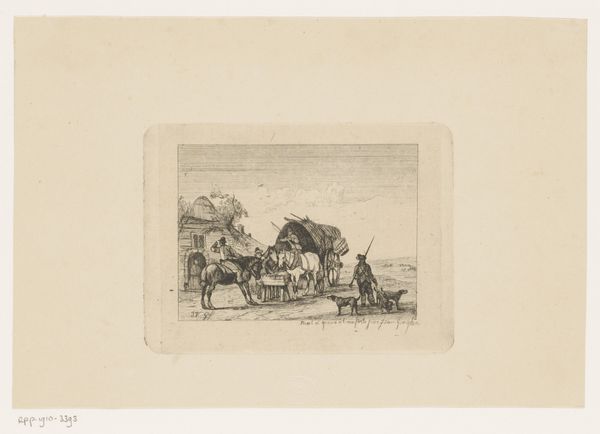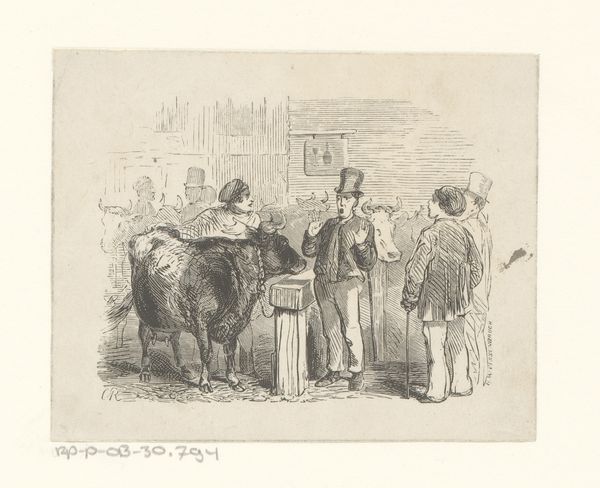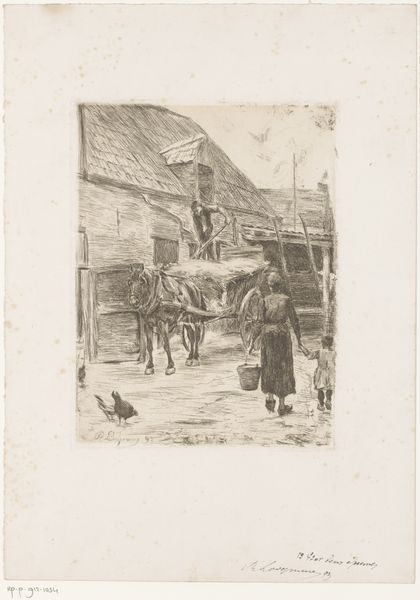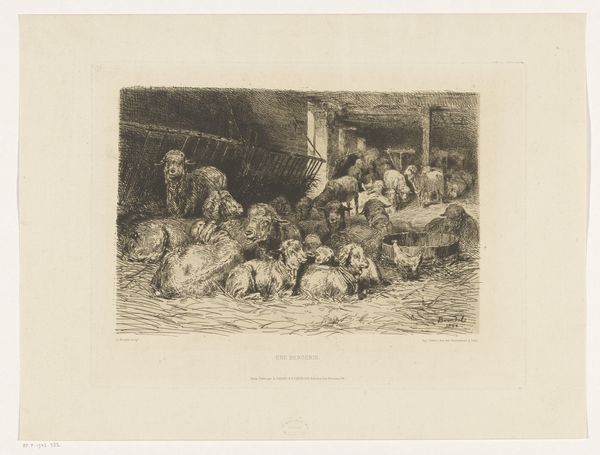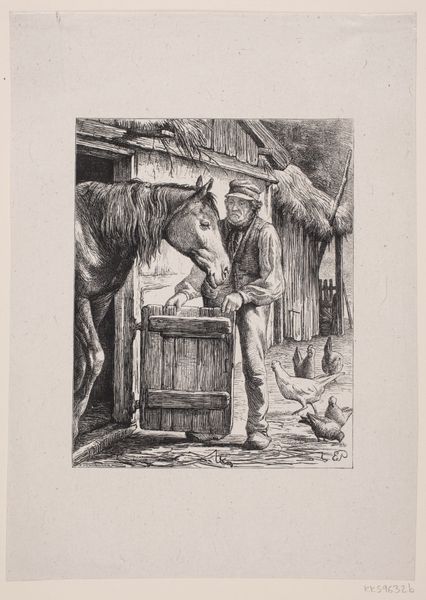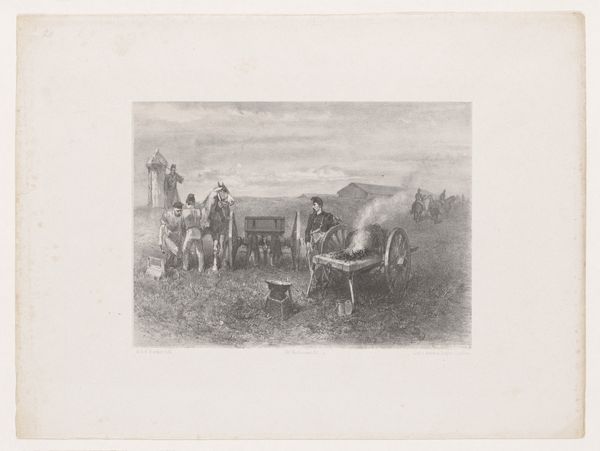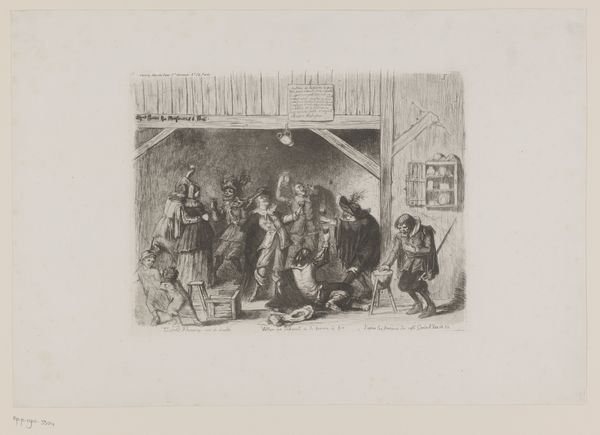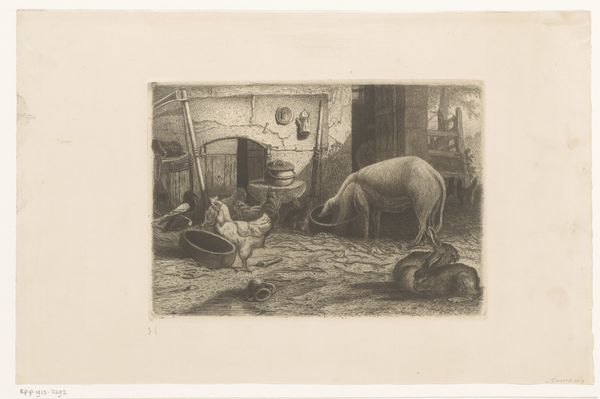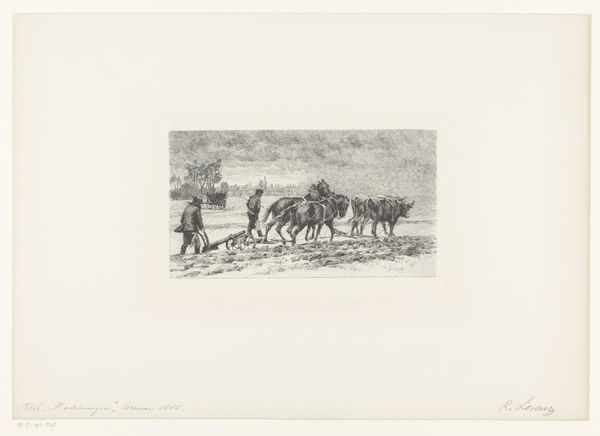
drawing, paper, pencil
#
pencil drawn
#
drawing
#
pencil sketch
#
landscape
#
paper
#
pencil drawing
#
pencil
#
pencil work
#
genre-painting
#
realism
Dimensions: height 272 mm, width 300 mm
Copyright: Rijks Museum: Open Domain
Editor: So, this is Herman Heijenbrock’s "Graanoogst," placing it roughly between 1900 and 1925. It's a drawing, pencil on paper, and I find it immediately evokes a sense of labor and rural life. What stands out to you in this piece? Curator: The cyclical nature of harvest is rendered quite powerfully here, don't you think? Consider the loaded symbols: the workers, the grain itself, and the implied presence of family… They create an icon of sustenance. Does it strike you as more celebratory or laborious? Editor: Probably more laborious, given the visible strain on the workers lifting the heavy grain. It makes me think of historical depictions of farm labor… but is there a symbolic contrast intended in its portrayal? Curator: Absolutely. The grain harvest represents a cultural continuity spanning millennia. However, here it coexists with elements suggestive of social realism. Notice the obscured faces, which render individual emotion invisible beneath collective effort. Does the almost muted color palette reinforce or undermine these elements? Editor: It definitely reinforces the labor aspect – less idyllic, more grounded. Curator: Precisely! The scene blends the timeless symbolism of harvest with a direct visual record of early twentieth century realities, forming a statement on endurance and sustenance, almost sacramental. Editor: I never thought of it that way. It's like Heijenbrock uses the harvest as a symbol for a deeper social commentary, bridging generations and labor through simple acts. Curator: Indeed. A scene rooted in tradition and reflecting humanity's continuing struggle. Looking again, what elements now particularly resonate with you?
Comments
No comments
Be the first to comment and join the conversation on the ultimate creative platform.
